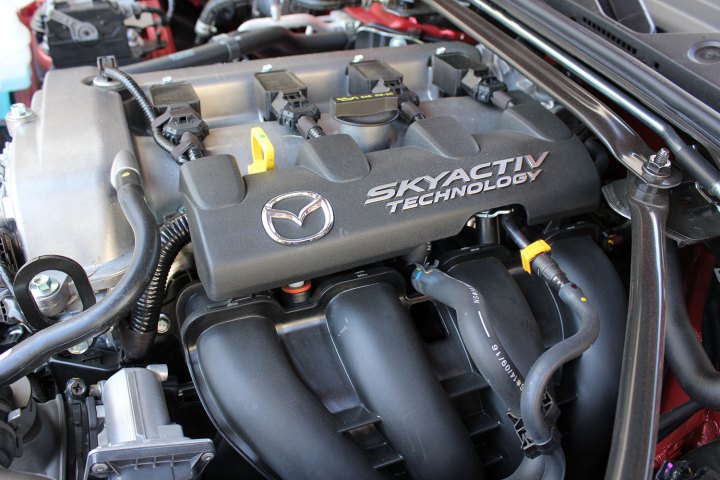
That includes the possible revival of a technology that many automakers have experimented with, but that has never been used in a production car. It’s called homogeneous-charge compression ignition (HCCI), and it allows a gasoline engine to operate without spark plugs, like a diesel. Nikkei reports that Mazda is planning to introduce one of these engines next year.
The new engine will reportedly debut in the Mazda 3 compact, before moving on to other models. It will be part of Mazda’s next-generation lineup of Skyactiv efficiency-focused engines. Use of HCCI would be a radical departure for Mazda, as Skyactiv engines so far have relied on more basic technologies and designs to achieve better fuel economy.
In a normal gasoline engine, the spark plug ignites the fuel-air mixture. In an HCCI engine, ignition is achieved purely by pressure, as in a diesel engine. This is supposed to be more efficient, reducing emissions and allowing engineers to get more power out of a smaller, less-thirsty engine. But gasoline isn’t as easy to ignite with compression as diesel, which is why no HCCI engine has ever made it to production. General Motors, Mercedes-Benz, and Volkswagen have all experimented with the technology, though.
Mazda hasn’t confirmed anything, but it may view HCCI as a less-expensive alternative to electrified powertrains. The Japanese automaker has no hybrids or electric cars in its current lineup, instead relying on the Skyactiv engines to cultivate a green image and keep in line with efficiency targets. As one of the world’s smallest full-line carmakers, Mazda has limited resources to develop electrified powertrains; it’s relying on a partnership with Toyota for that.
Mazda isn’t completely ignoring electric cars, though. Officials have said the company will launch an electric car by 2019, although that car may use a gasoline engine as a range extender.


